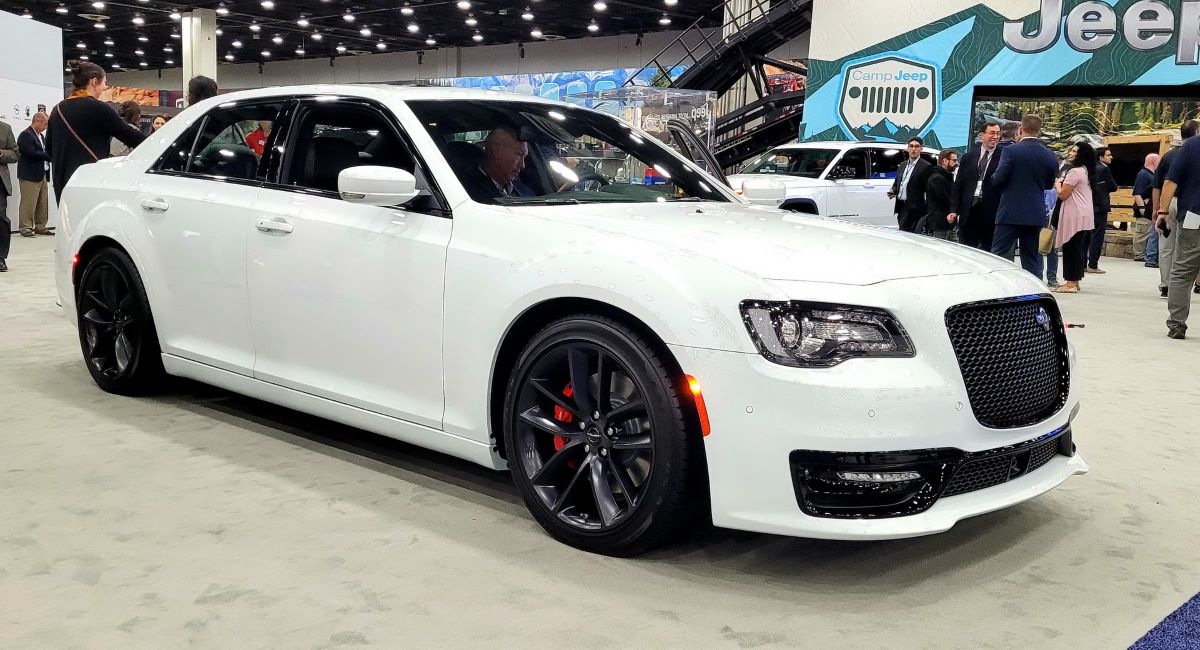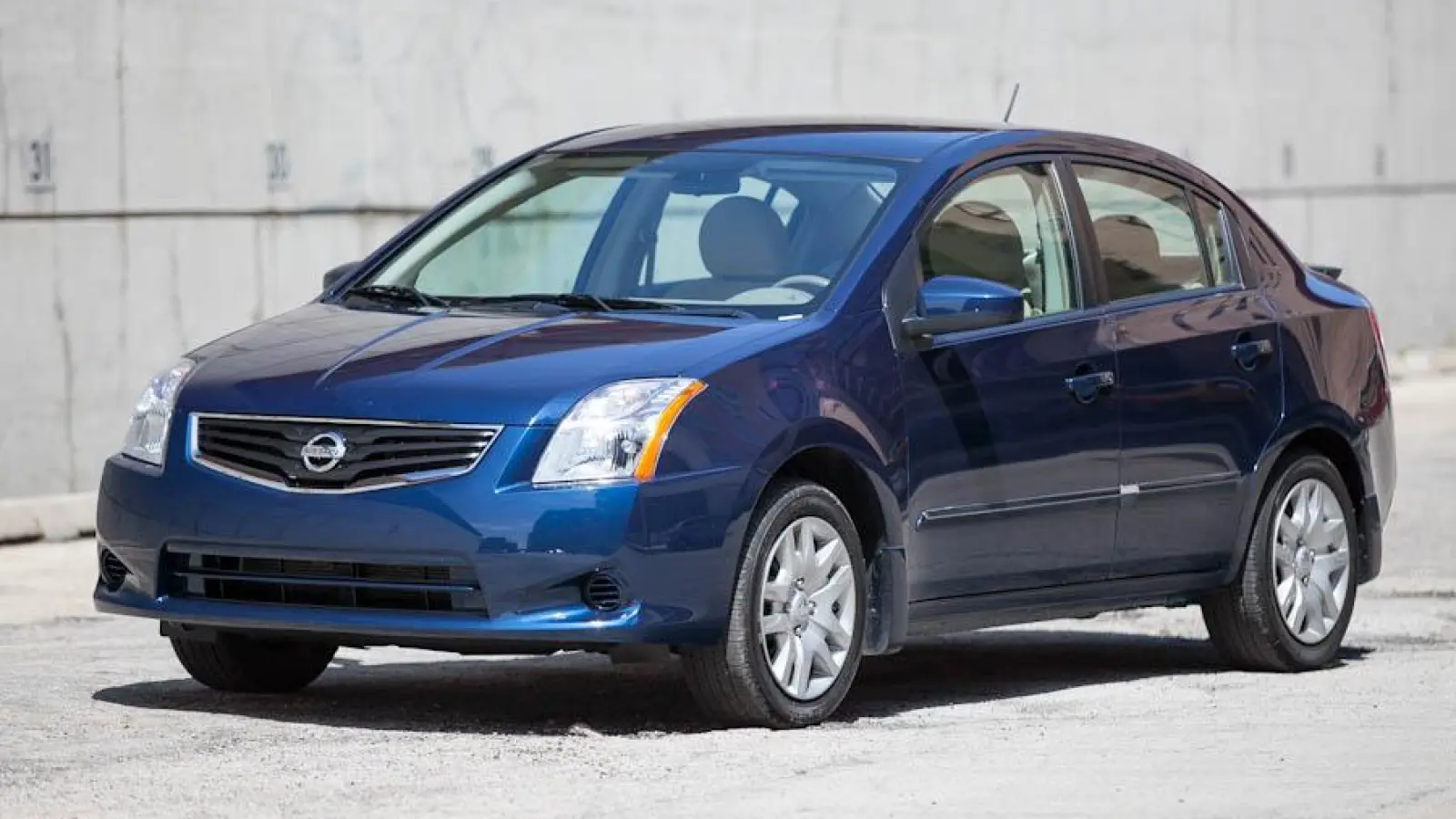In today’s automotive landscape, the difference between proactive and reactive vehicle communication systems can mean the difference between a minor inconvenience and a catastrophic breakdown.
Modern vehicles are equipped with increasingly sophisticated computer systems that monitor hundreds of parameters in real-time, from engine performance and transmission health to brake pad wear and fluid levels. However, not all manufacturers approach owner alerts with the same philosophy or effectiveness.
Some automotive brands have embraced comprehensive diagnostic systems that provide early warnings, detailed maintenance schedules, and even predictive analytics to help owners stay ahead of potential problems.
These vehicles act as communication partners, constantly informing drivers about their car’s health status through dashboard displays, smartphone apps, and even direct notifications to service centers.
On the opposite end of the spectrum, certain vehicles operate under a more traditional approach, where warning lights appear only when systems have already failed or are on the brink of failure.
The most advanced safety and alert systems are increasingly becoming standard features in top-rated vehicles, with brands like Honda and Toyota leading in comprehensive safety and reliability ratings.
This technological divide has created a clear distinction between vehicles that empower owners with information and those that leave them guessing about their car’s condition until it’s potentially too late.
Understanding which vehicles fall into each category can save drivers thousands of dollars in repair costs and prevent dangerous roadside breakdowns.
5 Cars That Alert Owners Instantly
These technologically advanced vehicles feature sophisticated communication systems that immediately notify owners through multiple channels when suspicious activity is detected around their vehicle.
Modern cars equipped with systems like OnStar, Tesla’s mobile app connectivity, and advanced GPS tracking devices can send instant push notifications, text messages, and phone calls within seconds of detecting unauthorized access attempts or unusual movement patterns.
The CarLock car tracking system uses GPS signals and GSM technology to track vehicle location and will alert owners immediately if it detects something suspicious, while integrated telematics systems monitor everything from door openings to engine starts and glass breakage.
These real-time alert systems provide precise location data, timestamps, and detailed incident reports that enable owners to respond quickly and coordinate with law enforcement before thieves can successfully escape with their valuable vehicles.
1. BMW 3 Series and 5 Series (2020-2025)
BMW has revolutionized vehicle diagnostics with its ConnectedDrive system and comprehensive iDrive interface, making its 3 Series and 5 Series among the most communicative vehicles on the market.
The Condition Based Service (CBS) system continuously monitors over 500 different vehicle parameters, providing owners with detailed information about everything from oil degradation to brake pad thickness months before service is required.
The BMW ConnectedDrive app extends this monitoring capability to smartphones, allowing owners to check their vehicle’s status remotely. The system provides specific maintenance countdowns, not just generic time or mileage intervals, based on actual driving conditions and component wear.
For example, the oil change indicator doesn’t simply count miles but analyzes oil temperature, driving style, and environmental conditions to determine the optimal service interval.
What sets BMW apart is its predictive maintenance capabilities. The system can detect developing issues weeks or even months before they become problematic.

Sensors monitor vibration patterns in the engine and transmission, unusual electrical draws, and even slight variations in brake pressure that might indicate worn components.
When potential issues are detected, the system provides detailed descriptions of the problem, an estimated timeline for service, and can even schedule appointments with nearby dealerships automatically.
The iDrive system displays a comprehensive vehicle status screen that shows everything from tire pressure readings for each tire to the exact percentage of brake pad material remaining.
The system also provides detailed fuel economy analysis, helping owners understand how their driving habits affect vehicle performance and potentially identify efficiency issues that might indicate mechanical problems.
BMW’s approach to owner communication extends to their smartphone integration, where the My BMW app provides push notifications for everything from routine maintenance reminders to immediate alerts if the vehicle detects a security breach or mechanical issue.
The system even monitors battery health in real-time and can alert owners if the battery is showing signs of degradation before it fails. The diagnostic capabilities are so advanced that BMW service centers can often diagnose and order parts before the vehicle arrives, thanks to the detailed data transmitted by the vehicle’s monitoring systems.
This proactive approach has significantly reduced unexpected breakdowns among BMW owners and has created a more predictable maintenance experience.
2. Tesla Model S, Model 3, Model X, and Model Y (2018-2025)
Tesla has pioneered over-the-air vehicle monitoring and communication, creating an ecosystem where vehicles are constantly connected to Tesla’s servers and can receive immediate attention when issues arise.
The Tesla mobile app provides real-time vehicle status updates, including battery health, charging status, climate control, and even security monitoring through the built-in cameras.
The vehicle’s touchscreen interface displays comprehensive diagnostic information, including individual battery cell temperatures, motor performance metrics, and detailed energy consumption analysis.
Tesla’s unique approach includes predictive analytics that can identify potential issues before they affect vehicle performance. The system monitors thousands of data points every second and uses machine learning algorithms to detect patterns that might indicate developing problems.
Tesla’s Service Mode provides owners with detailed diagnostic information typically reserved for technicians in traditional vehicles.
Owners can access real-time data about high-voltage battery performance, individual motor temperatures, and even detailed brake system analysis. The system provides specific alerts for everything from tire pressure variations to potential charging system issues.

What makes Tesla particularly unique is their proactive communication approach. The company often identifies potential issues across its fleet through data analysis and can push software updates or notify owners before problems manifest.
Tesla service centers receive automatic notifications when vehicles in their area show signs of developing issues, allowing them to reach out to owners proactively.
The mobile app integration extends to remote diagnostics, where Tesla service teams can access vehicle data remotely and often resolve issues through software updates without requiring a service visit.
The system provides detailed maintenance scheduling based on actual vehicle usage rather than generic intervals, and can even adjust maintenance recommendations based on driving patterns and environmental conditions.
Tesla’s approach to battery monitoring is particularly sophisticated, with the system providing detailed analysis of charging patterns, battery degradation rates, and optimal charging strategies.
The system can alert owners to charging issues, recommend optimal charging schedules, and even notify them if charging equipment is potentially damaging the battery.
3. Mercedes-Benz E-Class and S-Class (2019-2025)
Mercedes-Benz has integrated its MBUX (Mercedes-Benz User Experience) system with comprehensive vehicle monitoring capabilities, creating one of the most sophisticated owner communication systems in the luxury vehicle segment.
The system provides detailed vehicle health reports through both the dashboard display and the Mercedes me app, offering insights into everything from engine performance to predictive maintenance scheduling.
The Active Service System goes beyond traditional maintenance intervals, analyzing actual vehicle usage and component wear to provide personalized service recommendations.
The system monitors oil quality through spectral analysis, tracks brake pad wear through pressure sensors, and even analyzes suspension performance to detect potential issues before they affect ride quality or safety.
Mercedes-Benz vehicles feature comprehensive sensor networks that monitor critical systems continuously. The system can detect unusual vibrations, temperature variations, or pressure changes that might indicate developing problems.
When potential issues are identified, the system provides detailed explanations through the MBUX interface, including estimated timelines for service and potential consequences of delaying maintenance.

The Mercedes me app extends vehicle monitoring to smartphones, providing real-time alerts for everything from security breaches to mechanical issues.
The system can send push notifications if the vehicle detects unusual activity, mechanical problems, or even if someone attempts to tamper with the vehicle. The app also provides detailed fuel economy analysis and can identify driving patterns that might affect vehicle longevity.
What sets Mercedes apart is their integration with authorized service centers, where vehicle diagnostic data is automatically transmitted when potential issues are detected.
Service advisors can review vehicle data before appointments, often diagnosing problems and ordering parts in advance. This proactive approach significantly reduces service time and ensures that the correct parts are available when needed.
The system also provides detailed tire monitoring, not just pressure alerts but also temperature monitoring and tread depth estimation based on vehicle dynamics.
The system can detect uneven tire wear patterns that might indicate alignment issues or suspension problems before they become severe enough to affect vehicle handling or safety.
Mercedes-Benz has also integrated predictive analytics into its monitoring systems, using data from thousands of similar vehicles to identify potential issues before they occur.
The system can recommend preventive maintenance based on the experiences of similar vehicles with comparable usage patterns, helping owners avoid unexpected breakdowns.
4. Audi A4, A6, and Q5 (2020-2025)
Audi’s approach to vehicle monitoring combines their MMI (Multi Media Interface) system with comprehensive diagnostic capabilities through the myAudi app, creating a seamless communication channel between vehicle and owner.
The system provides detailed vehicle status reports, predictive maintenance scheduling, and even remote diagnostic capabilities that allow Audi service teams to identify and resolve issues before they affect vehicle performance.
The Audi connect system monitors vehicle health continuously, tracking everything from engine performance metrics to individual sensor readings across all major systems.
The system provides detailed maintenance countdowns based on actual component wear rather than generic time or mileage intervals. For example, the brake pad monitoring system uses actual pad thickness measurements rather than estimations based on driving patterns.
What makes Audi’s system particularly effective is their integration of artificial intelligence and machine learning algorithms that analyze vehicle data to predict potential issues.
The system can identify patterns in sensor data that might indicate developing problems weeks or even months before they become apparent to drivers or traditional diagnostic equipment.

The myAudi app provides comprehensive vehicle monitoring capabilities, including real-time status updates, maintenance scheduling, and even remote diagnostic access for authorized service centers.
The app can send immediate notifications if the vehicle detects security breaches, mechanical issues, or even unusual activity such as attempted theft or vandalism.
Audi’s predictive maintenance capabilities extend to major component monitoring, where the system tracks the health of critical components like the transmission, turbocharger, and cooling system.
The system can detect gradual performance degradation that might indicate developing issues and provide specific recommendations for preventive maintenance.
The vehicle’s MMI system displays comprehensive diagnostic information in an easily understandable format, providing owners with detailed insights into their vehicle’s condition.
The system includes visual representations of component health, maintenance schedules, and even historical data showing how vehicle performance has changed over time.
Audi service centers receive automatic notifications when vehicles in their area show signs of developing issues, allowing them to contact owners proactively to schedule maintenance before problems become severe.
This approach has significantly reduced unexpected breakdowns and has created a more predictable ownership experience for Audi customers.
Also Read: 5 Cars With Anti-Theft Ratings Through the Roof and 5 That Are Sitting Ducks
5. Lexus ES, GS, and RX (2019-2025)
Lexus has built their reputation on reliability, and their approach to vehicle monitoring reflects this philosophy through comprehensive diagnostic systems and proactive owner communication.
The Lexus Enform system provides detailed vehicle health monitoring through both dashboard displays and the Lexus app, offering insights into maintenance needs weeks or months before service is required.
The Lexus Maintenance Alert system goes beyond simple mileage-based recommendations, analyzing actual driving conditions and component wear to provide personalized service schedules.
The system monitors oil degradation through chemical analysis sensors, tracks brake component wear through multiple measurement methods, and even analyzes air filter efficiency to optimize engine performance.
What sets Lexus apart is their focus on long-term reliability monitoring, where the system tracks component performance over extended periods to identify gradual degradation that might not be apparent in shorter-term analysis.
The system can detect subtle changes in engine performance, transmission behavior, or suspension characteristics that might indicate developing issues.

The Lexus app provides comprehensive remote monitoring capabilities, including real-time vehicle status updates, maintenance scheduling, and even emergency assistance integration.
The app can send immediate notifications if the vehicle detects mechanical issues, security breaches, or even if someone attempts to access the vehicle without authorization.
Lexus vehicles feature sophisticated sensor networks that monitor critical systems continuously, including detailed engine performance analysis, transmission health monitoring, and comprehensive electrical system diagnostics.
The system provides specific alerts for potential issues, including detailed descriptions of problems and recommended actions. The integration with Lexus service centers allows for proactive maintenance scheduling, where service advisors can review vehicle diagnostic data and contact owners when maintenance is recommended.
This approach ensures that potential issues are addressed before they become problematic and helps maintain the reliability reputation that Lexus is known for.
Lexus has also implemented predictive analytics capabilities that use data from their extensive fleet to identify potential issues before they occur in individual vehicles.
The system can recommend preventive maintenance based on the experiences of similar vehicles with comparable usage patterns, helping owners avoid unexpected problems.
5 Cars That Say Nothing Until It’s Too Late
Despite their sophisticated appearance, many vehicles still rely on outdated security systems that provide delayed or no notification to owners when theft attempts occur, leaving them vulnerable to silent crimes that go undetected for hours or days.
Traditional factory alarm systems often only sound local sirens that can be quickly disabled or ignored in busy urban environments, providing no remote communication capabilities to alert owners who are not within hearing distance.
Many older vehicle models lack cellular connectivity or smartphone integration, meaning owners discover theft only when they return to an empty parking space or receive a call from police after the vehicle has been abandoned or involved in other crimes.
Basic aftermarket alarm systems frequently suffer from false alarms and notification delays, while some vehicles have no theft deterrent systems beyond simple door locks and mechanical immobilizers that provide zero communication when compromised, leaving owners completely unaware until it’s far too late to prevent the theft or aid in recovery efforts.
1. Chrysler 300 and Dodge Charger (2015-2023)
The Chrysler 300 and Dodge Charger represent a traditional approach to vehicle diagnostics that has frustrated owners and mechanics alike with their tendency to provide minimal warning before major system failures.
These vehicles, while offering impressive performance and styling, are notorious for their basic diagnostic systems that often illuminate warning lights only after problems have already caused significant damage.
U.S. auto companies have struggled in reliability rankings, with readers reporting considerable mechanical trouble with their vehicles. The UConnect infotainment system in these vehicles provides limited diagnostic information, often displaying generic warning messages that provide little insight into the actual nature or severity of problems.
Owners frequently report that the “Check Engine” light appears with no accompanying information about what might be wrong or how urgent the issue might be.
The transmission monitoring system in these vehicles is particularly problematic, with many owners reporting complete transmission failures with little or no warning.
The system typically provides no indication of transmission fluid temperature, pressure readings, or other critical parameters that might alert owners to developing problems.
When issues do arise, the system often defaults to limp mode without providing specific information about what has failed or what immediate actions should be taken.

Oil change monitoring is based on simple mileage calculations rather than actual oil condition analysis, leading to situations where oil degradation occurs faster than the system anticipates, particularly under severe driving conditions.
The system provides no information about oil pressure trends, temperature patterns, or other indicators that might suggest developing engine problems.
The electrical system diagnostics are equally limited, with the system providing no monitoring of alternator performance, battery health, or charging system efficiency.
Many owners report complete battery failures with no warning, despite modern diagnostic capabilities that could easily monitor battery condition and provide early warnings of degradation.
Brake system monitoring is limited to basic pad wear sensors on some models, with no monitoring of brake fluid condition, hydraulic pressure, or rotor condition.
This has led to numerous instances of brake system failures that could have been prevented with more comprehensive monitoring and earlier warnings.
The cooling system monitoring provides minimal information, often displaying temperature warnings only after overheating has already occurred and potentially caused engine damage.
The system provides no trending information or early warning indicators that might alert owners to developing cooling system problems, such as radiator blockages or water pump degradation.
2. Mitsubishi Outlander and Eclipse Cross (2018-2025)
Mitsubishi vehicles have gained a reputation for minimal diagnostic capabilities and poor communication with owners about developing mechanical issues.
Mitsubishi is often considered one of the most unpopular car brands due to outdated designs, a lack of innovation, and inconsistent reliability. The infotainment systems in these vehicles provide basic functionality but lack the comprehensive diagnostic capabilities found in more advanced vehicles.
The CVT transmission monitoring in Mitsubishi vehicles is particularly concerning, as these transmissions are prone to failure, but the diagnostic system provides virtually no warning of developing problems.
Owners frequently report complete transmission failures with no prior indication of issues, even though CVT transmissions typically show signs of degradation long before complete failure occurs.
Engine monitoring is limited to basic parameters, with no advanced diagnostics for critical components such as the timing chain, turbocharger (where equipped), or fuel injection system.
The system provides no trending information that might indicate developing problems, and warning lights typically appear only after problems have already caused performance issues or potential damage.

The electrical system diagnostics are minimal, providing no monitoring of charging system performance, battery health, or electrical load analysis.
This has led to numerous instances of unexpected electrical failures that could have been prevented with more comprehensive monitoring systems.
Brake system monitoring is limited to basic functionality, with no advanced diagnostics for hydraulic system health, brake fluid condition, or component wear beyond basic pad sensors. The system provides no predictive capabilities that might alert owners to developing brake problems before they affect vehicle safety.
The air conditioning and climate control system monitoring provides minimal diagnostic information, often displaying generic error messages that provide no insight into specific problems or required repairs. This has led to expensive air conditioning repairs that might have been prevented with earlier detection and intervention.
Fuel system monitoring is basic, with no advanced diagnostics for fuel pump performance, injector condition, or fuel quality issues. The system provides no early warning capabilities for fuel system problems that might affect engine performance or reliability.
3. Jeep Compass and Cherokee (2017-2024)
Jeep vehicles, particularly the Compass and Cherokee models, have developed a concerning reputation for inadequate diagnostic systems and poor owner communication about developing mechanical issues.
These vehicles often operate with minimal warning systems that provide little insight into vehicle health until major problems have already occurred.
The 9-speed automatic transmission used in these vehicles is particularly problematic, with many owners reporting harsh shifting, hesitation, and even complete failures with minimal warning from the vehicle’s diagnostic systems.
The transmission monitoring provides no information about fluid temperature, pressure readings, or shift quality metrics that might alert owners to developing problems. Engine monitoring in these vehicles is limited, particularly given the reliability issues with the 2.4-liter Tigershark engine.
The system provides minimal diagnostic information about critical components such as the oil pump, timing chain, or valve train, despite these being common failure points. Warning lights often appear only after problems have already caused internal engine damage.

The electrical system in Jeep vehicles is notoriously complex and problematic, yet the diagnostic systems provide minimal information about electrical issues. Owners frequently report intermittent electrical problems that are difficult to diagnose because the system provides no logging of electrical anomalies or performance trends.
Cooling system monitoring is inadequate, with the system providing no early warning of developing problems such as radiator issues, water pump degradation, or thermostat failures. Temperature warnings typically appear only after overheating has already occurred, potentially causing significant engine damage.
The air conditioning system monitoring provides minimal diagnostic capabilities, despite air conditioning problems being common in these vehicles. The system typically displays generic error messages that provide no insight into specific component failures or required repairs.
Brake system diagnostics are limited, providing no advanced monitoring of hydraulic system health or component condition beyond basic pad wear sensors. This has led to brake system failures that could have been prevented with more comprehensive monitoring and early warning systems.
4. Nissan Sentra and Altima with CVT (2013-2025)
Nissan’s CVT-equipped vehicles have become synonymous with transmission problems and inadequate diagnostic systems that fail to provide adequate warning before major failures occur.
The CVT monitoring system in these vehicles provides minimal information about transmission health, despite CVT transmissions requiring more careful monitoring than traditional automatic transmissions.
The diagnostic system provides no information about CVT fluid temperature, belt condition, or pulley wear, all critical parameters for CVT longevity.
Many owners report complete CVT failures with no warning, even though CVT transmissions typically exhibit symptoms of degradation long before complete failure occurs. Engine monitoring in these vehicles is basic, providing minimal diagnostic information about critical components.
The system provides no advanced monitoring of the continuously variable valve timing system, despite this being a common source of problems in Nissan engines. Warning lights often appear only after problems have already affected engine performance.

The electrical system diagnostics are inadequate, providing no monitoring of charging system performance or battery health. This has led to numerous instances of unexpected electrical failures, particularly problematic given the complexity of modern vehicle electrical systems.
Cooling system monitoring provides minimal early warning capabilities, with temperature warnings typically appearing only after overheating has begun. The system provides no trending information that might indicate developing cooling system problems before they cause engine damage.
Air conditioning system diagnostics are limited, despite air conditioning problems being relatively common in these vehicles. The system provides generic error messages that offer little insight into specific component failures or required repairs.
The fuel system monitoring provides minimal diagnostic capabilities, with no advanced monitoring of fuel pump performance or injector condition. This has led to fuel system failures that could have been prevented with more comprehensive diagnostic systems.
5. Ford Focus and Fiesta with PowerShift Transmission (2012-2018)
The Ford Focus and Fiesta equipped with the PowerShift dual-clutch transmission represent one of the most problematic combinations of inadequate diagnostics and unreliable components in recent automotive history.
These vehicles became notorious for transmission problems that the diagnostic system failed to predict or adequately communicate to owners. The PowerShift transmission monitoring system provided minimal information about clutch condition, hydraulic pressure, or transmission temperature, despite these being critical parameters for dual-clutch transmission operation.
Many owners experienced complete transmission failures with no warning from the diagnostic system, leading to expensive repairs and widespread customer dissatisfaction.
Engine monitoring in these vehicles was basic, providing limited diagnostic information about critical components such as the timing belt, water pump, or fuel injection system.
The system offered no predictive capabilities that might alert owners to developing problems before they caused performance issues or component damage.

The electrical system diagnostics were inadequate for the complexity of these vehicles, providing no monitoring of charging system performance, battery health, or electrical load analysis.
This led to numerous electrical problems that could have been prevented with more comprehensive monitoring systems. Cooling system monitoring provided minimal early warning capabilities, with the system typically displaying warnings only after overheating had already begun.
The system provided no trending information that might indicate developing cooling system problems, such as radiator blockages or water pump degradation.
Brake system diagnostics were limited to basic functionality, with no advanced monitoring of hydraulic system health, brake fluid condition, or component wear beyond basic sensors.
This led to brake system problems that could have been identified and addressed earlier with more comprehensive diagnostic systems. The air conditioning system monitoring provided minimal diagnostic information, often displaying generic error messages that provided no insight into specific problems or required repairs.
This made air conditioning problems difficult and expensive to diagnose and repair. Climate control and HVAC system monitoring were similarly limited, providing no diagnostic information about blower motor performance, actuator condition, or refrigerant system health.
These systems often failed with no warning, leading to expensive repairs that could have been prevented with better diagnostic capabilities.
Also Read: 5 Cars That Lock Themselves Instantly and 5 That Stay Vulnerable for Minutes

